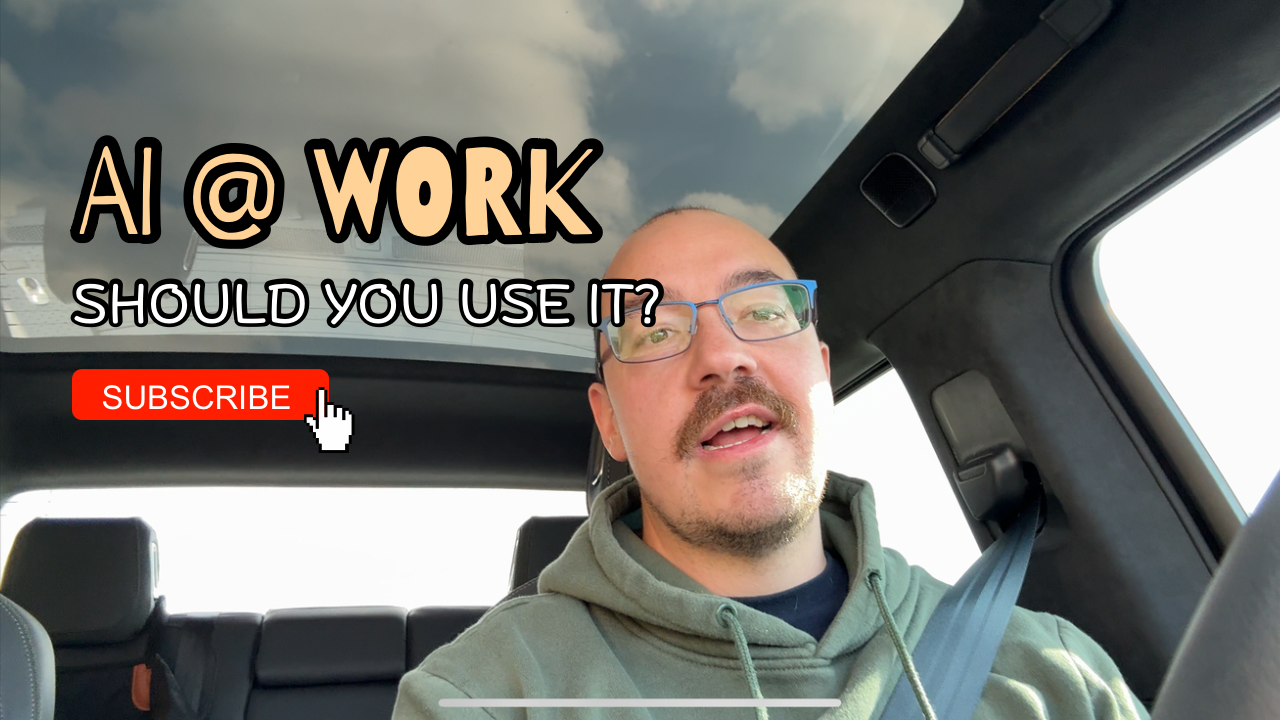It’s 2025. Are you leveraging AI in your work?
As a people leader, I’ve been thinking a lot about artificial intelligence lately—and if you’re not using it in some capacity, I believe you’re falling behind. Whether it’s ChatGPT, Claude, Gemini, or another tool, AI has transformed how I approach my work. But don’t misunderstand me: I’m not advocating for replacing critical thinking or eliminating personal effort. Instead, I’m talking about using AI to amplify your abilities and free up time for what truly matters.
This idea has been on my mind as we navigate the start of a new year. For those of you who don’t know me, I’m based in southeastern Pennsylvania, where winter has been harsh, with single-digit temperatures recently. Between surviving the cold and wrapping up quarterly planning at work, life has been a whirlwind. However, one consistent theme in my day-to-day is how I’m integrating AI into everything—from performance reviews to strategic decision-making.
So let’s talk about how leaders, knowledge workers, and anyone else can use AI effectively—and why now is the time to get started.
AI and Performance Management: A Game-Changer for Leaders
Performance management is a personal and critical responsibility for any leader. Reviews require thoughtful feedback, actionable suggestions, and a clear vision for an employee’s growth. Traditionally, this process involves gathering notes, combing through past feedback, and compiling it all into a cohesive review—time-consuming, to say the least.
Here’s where AI comes in.
AI tools like ChatGPT and Gemini can aggregate feedback, summarize strengths and opportunities, and even suggest action plans. While you still need to know your team and their individual nuances, AI helps package the information in a digestible way. For example, you can ask AI to:
- Summarize performance trends across multiple sources of feedback.
- Identify actionable next steps for an employee’s development.
- Highlight potential bias in your language or evaluations.
But remember: AI doesn’t eliminate the need for human judgment. You still need to review, tweak, and refine the output. The magic lies in how much time AI saves, allowing you to focus on strategy and supporting your team rather than getting bogged down in administrative tasks.
AI in the Workplace: A Tool, Not a Crutch
For years, AI felt like a taboo subject. People hesitated to admit they were using it, fearing it might seem like cheating. But the conversation has shifted, and AI is becoming an open part of workplace culture.
Here’s the reality: AI is only as good as the prompts and information you feed it. If you approach it thoughtfully, it can become an incredible tool for delegating repetitive tasks, generating ideas, and enhancing your own learning. For example:
- Delegation: Use AI for simple tasks your team doesn’t have the bandwidth for.
- Critical Thinking: Develop strong prompts to guide AI toward meaningful output.
- Eliminating Bias: Ask AI to analyze content for bias or suggest more inclusive language.
Does AI sometimes make mistakes? Absolutely. It can hallucinate, twist information, or generate inaccuracies. That’s why you need to approach it critically—double-checking its output and refining its responses.
AI for Learning: Tools You Should Explore
If you’re still hesitant about AI, consider experimenting with these tools:
- NotebookLM (Google’s AI-powered learning tool): Upload articles, PDFs, or research to create a personalized podcast-style summary. Perfect for auditory learners.
- Gemini (formerly Bard): Google’s AI tool is fast, detailed, and highly responsive, offering strong competition to ChatGPT.
- ChatGPT: A versatile tool for brainstorming, summarizing, and refining content.
Each of these tools offers unique opportunities to learn, grow, and innovate. For example, NotebookLM allows you to transform written content into audio summaries, making it easier to absorb new information.
Be Brave Enough to Try Something New
I recently came across a quote that resonated with me: “Be brave enough to be bad at something new.” AI can be intimidating, but it’s worth exploring. Start small—experiment with prompts, test the tools, and figure out how they can fit into your workflow.
For people leaders, AI can streamline performance management, highlight resources for employee growth, and even generate coaching plans. For individual contributors, it can save time on repetitive tasks and open up bandwidth for more meaningful work.
Sure, there will be bumps along the way, but the potential to learn and grow with AI is immense.
Final Thoughts
AI isn’t perfect, but it’s here to stay. Whether you’re a leader or an individual contributor, integrating AI into your workflow can unlock opportunities you didn’t think possible. But remember: the key to using AI effectively is to approach it critically. Don’t let it replace your thinking—use it to enhance it.
If you’re curious about how I’m using AI or have questions about getting started, I’d love to hear from you. Drop a comment, subscribe to my YouTube channel, or share your thoughts. Let’s explore this space together!
Also, check out my full vlog on this topic over on YouTube and subscribe if you haven’t already—I’m building a growing library of thoughts on leadership, technology, and personal growth.
Until next time!
– Sean, aka Milhaus

Leave a Reply